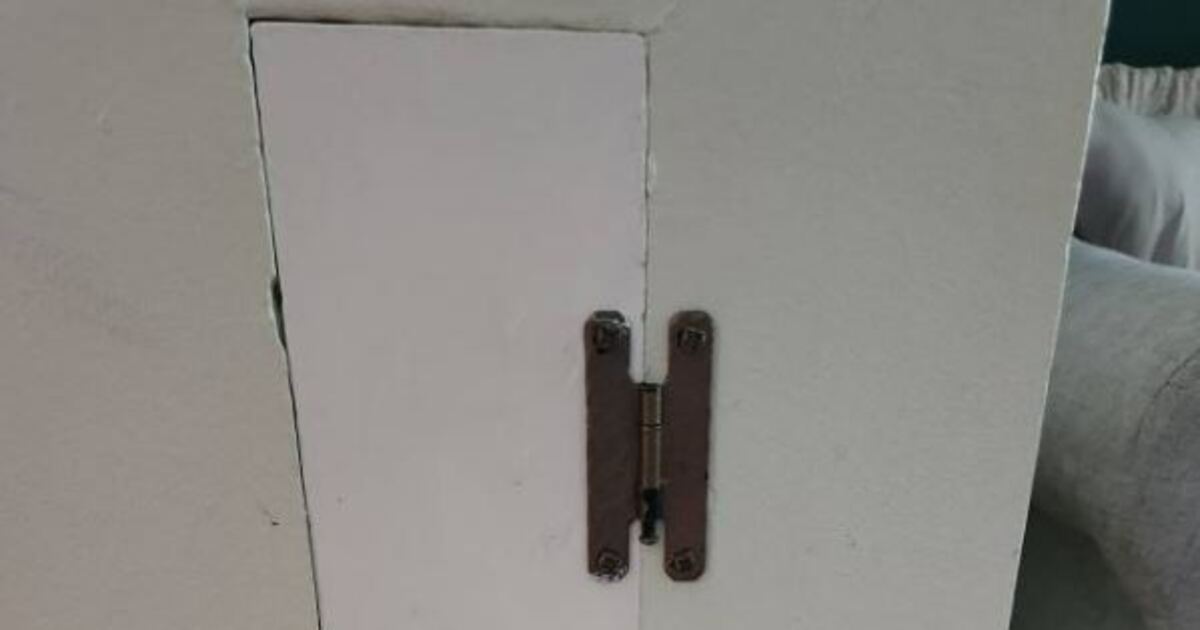This Strange Built-In Left Homeowners Baffled For Decades

source: CC Coates/Facebook
When you come across them, these skinny, vertical wall compartments are one of those special home features that instantly find us eager to explore further. If you’ve ever seen one — like the specimen above — chances are you’ve asked yourself, What in the world was this used for? The shape is unusual. The size is oddly specific. It’s frequently stashed where you’d least expect a storage space. The most popular theories for these spaces include storing extra table leaves, making them quite a practical feature.
A Clever Space-Saving Idea
Once upon a time, furniture was not just decorative — it had a use. Dining tables in particular were often created to grow when guests arrived. They shrunk back down the rest of the time to save space. Not many people were lucky enough to even have a separate dining room, so extending tables were typical in the early-to-mid-20th century.
But where to put those sprawling, awkward table leaves when not in use? That was a completely different challenge. Builders frequently worked in narrow wall cubby holes such as this one. These cubby holes accommodated a very specific need: storing extra table leaves. They stood on edge and were out of the way.
When you think about it, that makes perfect sense: table leaves are large and thin and should be stored vertically to prevent warping. In terms of ticking all the boxes, it’s hard to beat this compartment’s narrow, deep design.

Might That Have Been Something Else?
Of course, as with many features of older homes, the storage nook may have had multiple previous uses and different iterations depending on era or region or the needs of a homeowner. Here are some of the other possibilities:
- Ironing Board Cabinet
Some houses had permanent fold-down ironing boards in such wall units. But most of those were wider, as they had to be in order to contain the surface of the board and whatever mechanics made it fold down. That said, it’s not out of the question that some tweaked or early iteration looked something like this.
- Broom or Cleaning Supply Closet
If not for table leaves, the thing’s narrowness might have given it in other hands a fusty tone, as though someone had repurposed a broom cupboard. It would have stored a broom, mop or dustpan vertically, hidden from view but easy to reach. Then again, the depth of the compartment and the absence of shelving make it fairly clear that it wasn’t made for those either.
- Secret Storage or Hidden Panel
In addition: Older homes, particularly those predating contemporary security measures, often had small hidden compartments in walls or floors. This one isn’t exactly a secret stash but could be a fun thing to do with valuables in the midst of uncertain times.
- Magazine or Blueprint Holder
Though they are now less common, at least in home as opposed to office settings, compartments like this were also used for rolled-up blueprints, newspapers or maps.
The Most Likely Use? Table Leaves
While those other possibilities are intriguing, I suspect the most realistic use — and one that is likely to happen — would be holding extra table leaves. It fits, the timing makes sense and it speaks to the ingenuity of home design from an age when every inch counted.
It’s a sweet symbol of how houses used to be constructed around adaptability. Back when family dinners included inserting a leaf in the table and squishing another chair around it, spaces like these were quietly supporting such endeavors.
Nostalgia Built Into the Walls
There’s just something cool about finding old stuff like this in a house. These are not eccentricities — they’re time capsules. They speak of the scheduling and rhythms for families who lived, gathered and shared moments in those same rooms.
If you’re fortunate enough to have such a mysterious compartment in your home, think about keeping it. Whether you keep it for the occasion storage of extra table leaves, to hide holiday gifts or simply as a bit of history on display, it’s a delightful slice of old time-y thinking bathed right into the wall.